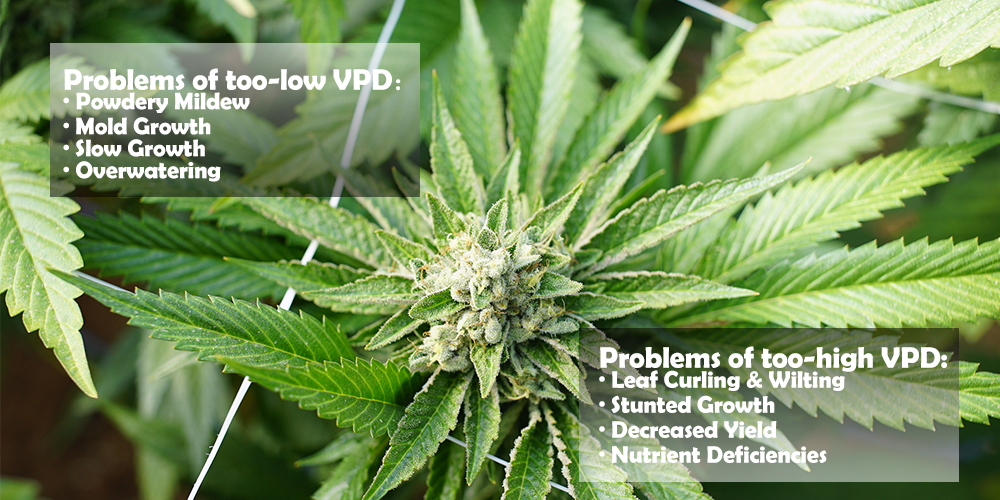VPD, or Vapor Pressure Deficit, is a measure of the difference between the amount of moisture in the air and the maximum amount of moisture the air could hold at a specific temperature. Maintaining the proper VPD is crucial for the optimal growth of cannabis plants. Here are some problems that can arise when VPD is not properly managed:

1. Stunted Growth:
- Low VPD: If the VPD is too low, it means that the air is too humid for the given temperature. This can lead to slow transpiration rates in the plant, limiting nutrient uptake and overall growth.
- High VPD: On the other hand, if the VPD is too high, the air is too dry. This can cause excessive transpiration, leading to dehydration and nutrient stress in the plant. Stunted growth and reduced yields may result.
2. Disease and Pest Issues:
- Low VPD: High humidity levels due to low VPD can create a favorable environment for mold, mildew, and other fungal diseases. Pests such as spider mites may also thrive in such conditions.
- High VPD: Extremely dry conditions can stress the plants and make them more susceptible to certain pests. Additionally, the rapid transpiration in high VPD environments can lead to nutrient imbalances, making the plants more vulnerable to diseases.
3. Temperature Stress:
- Low VPD: In high-humidity conditions, the plants may struggle to cool themselves through transpiration. This can lead to elevated leaf temperatures, which can stress the plants and negatively impact metabolic processes.
- High VPD: Excessive dryness in the air can cause the plants to lose water rapidly through transpiration. If the root system cannot absorb water quickly enough, the plants may experience water stress and temperature-related issues.
4. Nutrient Uptake Issues:
- Low VPD: Slow transpiration rates can limit the uptake of essential nutrients by the roots. This can lead to nutrient deficiencies and impact the overall health and development of the cannabis plants.
- High VPD: Rapid transpiration in high VPD conditions may lead to nutrient imbalances and deficiencies. The plants may struggle to absorb and transport nutrients effectively, affecting their growth and productivity.
5. Flowering and Bud Development:
- Low VPD: Insufficient transpiration during the flowering stage can impact bud development, leading to smaller and less potent flowers.
- High VPD: Excessive transpiration during flowering can lead to water stress, affecting the quality of the buds and potentially reducing THC and terpene production.
To avoid these problems, it's crucial to monitor and adjust environmental conditions, including temperature and humidity, to maintain an appropriate VPD for each stage of cannabis growth. Proper ventilation, temperature control, and humidity management are essential components of a successful cannabis cultivation strategy.
Post time: Nov-20-2023
 +86-13376814803
+86-13376814803  robert@hzhongtai.com
robert@hzhongtai.com 











